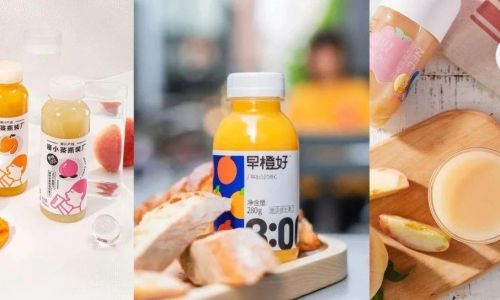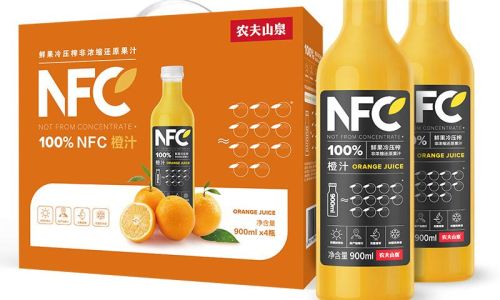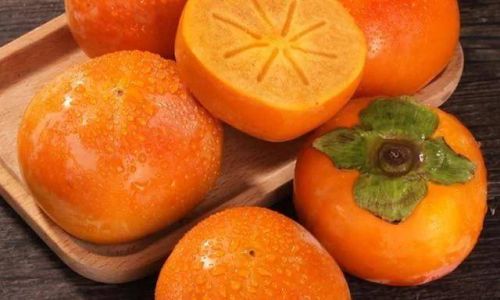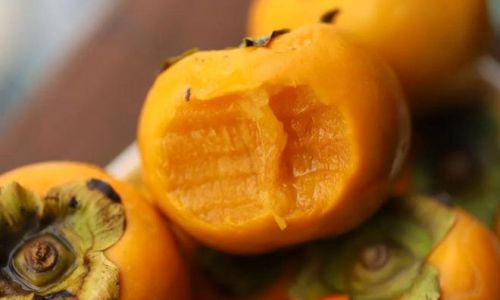In an era where health-conscious consumers are scrutinizing food labels more than ever, terms like “organic,” “cold-pressed,” and “NFC” have become buzzwords in the beverage aisle. Among these, NFC juice—short for Not From Concentrate—has emerged as a premium category, often priced higher than conventional juices but touted as a purer, more nutritious alternative. But what exactly does “NFC” mean, and is it worth the hype? This article delves into the science, production process, and cultural significance of NFC juice, exploring why it has become a symbol of mindful consumption in the 21st century.
What Is NFC Juice?
At its core, NFC juice is fruit juice that has not been reconstituted from a concentrated form. To understand this distinction, it’s essential to grasp how most conventional juices are produced. Traditional bottled juices, including many labeled as “100% juice,” are often made by extracting juice from fruits, reducing it to a concentrate by removing water (typically through evaporation or vacuum processes), and then later reconstituting it by adding water back before packaging. This method extends shelf life, reduces shipping costs, and allows for consistent flavor profiles year-round, regardless of seasonal fruit availability.
NFC juice, by contrast, skips the concentration and reconstitution steps. Instead, the juice is extracted from fresh fruits, lightly pasteurized to kill harmful bacteria, and packaged directly. The absence of concentration means the juice retains more of its original water content, nutrients, and flavor compounds, which proponents argue makes it closer to freshly squeezed juice than its reconstituted counterparts.

The Production Process: From Farm to Bottle
The journey of NFC juice begins in orchards and farms, where ripe fruits are harvested at peak maturity. Unlike concentrate production, which may use underripe or overripe fruits (since flavor adjustments can be made during reconstitution), NFC manufacturers prioritize premium-quality produce to ensure optimal taste and nutritional value.
- Fruit Selection and Washing: Fruits are carefully inspected to remove damaged or subpar specimens. They are then thoroughly washed to eliminate dirt, pesticides, and microbes.
- Juice Extraction: The fruits are crushed or pressed to extract their liquid. Modern NFC facilities often use cold-pressed methods or enzymatic extraction to minimize heat exposure, which can degrade nutrients and flavor.
- Pasteurization: To ensure safety and extend shelf life, the juice is briefly heated (a process called flash pasteurization) or treated with high-pressure processing (HPP) to eliminate pathogens without compromising nutritional quality.
- Packaging: The juice is filled into aseptic containers, glass bottles, or Tetra Pak cartons, which protect it from light, oxygen, and contamination.
Unlike concentrated juices, which may have additives like sugar, preservatives, or flavor enhancers to mask quality loss during processing, NFC juices typically contain only juice—no water, sweeteners, or artificial ingredients.
NFC vs. Concentrate: A Nutritional Showdown
One of the primary selling points of NFC juice is its perceived nutritional superiority. But does the absence of concentration truly result in a healthier product?
- Vitamin Retention: Some vitamins, particularly heat-sensitive ones like vitamin C, can degrade during the evaporation process used to create concentrate. NFC juice, being minimally processed, may retain slightly higher levels of these nutrients. However, the difference is often marginal, as both NFC and concentrate juices undergo pasteurization.
- Flavor and Aroma: The concentration process can alter the natural flavor profile of juice, sometimes requiring manufacturers to add “flavor packs” (derived from the same fruits) to restore taste. NFC juice, by avoiding this step, claims to offer a more authentic, vibrant taste.
- Sugar Content: Both NFC and concentrate juices contain naturally occurring sugars from fruit. However, NFC juice does not have added sugars, which are sometimes present in cheaper juice blends.
Critics argue that even NFC juice lacks the fiber found in whole fruits and contributes to excessive sugar intake when consumed in large quantities. Nonetheless, for consumers seeking a convenient, unadulterated fruit juice, NFC remains a top choice.
The Rise of NFC Juice in Global Markets
The NFC juice market has experienced exponential growth in recent years, driven by:
- Health Trends: As consumers shift toward “clean labels” and minimally processed foods, NFC juice aligns with demands for transparency and authenticity.
- Premiumization: NFC juice is often positioned as a luxury product, appealing to affluent buyers willing to pay a premium for perceived quality.
- Sustainability: Some NFC brands emphasize eco-friendly practices, such as sourcing locally or using recyclable packaging, to attract environmentally conscious shoppers.
In 2023, the global NFC juice market was valued at over $15 billion, with projections indicating steady growth through 2030. Leading producers include brands like Tropicana (PepsiCo), Naked Juice (PepsiCo), and Innocent Drinks (Coca-Cola), alongside artisanal companies that prioritize organic or rare fruit varieties.
Challenges Facing the NFC Industry
Despite its popularity, NFC juice faces several hurdles:
- Shelf Life: Without concentration, NFC juice has a shorter shelf life (typically 30–90 days) compared to concentrate-based juices, which can last up to two years. This necessitates efficient cold-chain logistics and increases distribution costs.
- Seasonality: NFC production is heavily reliant on fruit harvest seasons, making it challenging to maintain consistent supply year-round without blending with concentrate or imported juices.
- Cost: The labor-intensive production process and reliance on high-quality fruits make NFC juice significantly more expensive than conventional options, limiting accessibility to price-sensitive markets.
Innovations Driving the Future of NFC Juice
To address these challenges, the industry is exploring cutting-edge technologies:
- High-Pressure Processing (HPP): This non-thermal pasteurization method uses extreme pressure to eliminate bacteria while preserving flavor and nutrients, extending shelf life without heat.
- Aseptic Packaging: Advanced packaging materials block light and oxygen, further延缓ing spoilage and reducing the need for preservatives.
- Cold-Pressed Innovations: New machinery allows for gentler juice extraction, minimizing oxidation and nutrient loss.
Additionally, brands are experimenting with unconventional fruits, such as açai, dragon fruit, and yuzu, to differentiate themselves in a crowded market. Functional NFC juices, fortified with probiotics, collagen, or CBD, are also gaining traction among wellness-oriented consumers.
NFC Juice in the Cultural Zeitgeist
NFC juice’s rise reflects broader societal shifts toward mindfulness and authenticity. In an age of ultra-processed foods and greenwashing, consumers are increasingly skeptical of marketing claims. Terms like “NFC” provide a shorthand for trust, signaling a product that adheres to strict processing standards.

Social media has played a pivotal role in this trend, with influencers and wellness bloggers promoting NFC juice as part of “clean eating” regimens. Smoothie bowls, juice cleanses, and “detox” diets often feature NFC blends, reinforcing their association with health and vitality.
However, this cultural embrace has sparked debate. Critics argue that the premium pricing of NFC juice exacerbates food inequality, positioning a basic dietary staple as a luxury good. Others caution against overconsumption, noting that even natural sugars in juice can contribute to metabolic issues when drunk in excess.
The Environmental Impact of NFC Juice
While NFC juice is often marketed as a “natural” choice, its environmental footprint warrants scrutiny. The production process requires significant energy for pasteurization, refrigeration, and transportation. Additionally, single-use packaging, even if recyclable, contributes to plastic waste.
Some brands are addressing these concerns by:
- Sourcing fruits locally to reduce transportation emissions.
- Investing in renewable energy for facilities.
- Adopting biodegradable or refillable packaging solutions.
Consumers, in turn, are urged to prioritize juice in recyclable containers and support companies with transparent sustainability commitments.
NFC Juice: A Gateway to Whole Food Nutrition?
Despite its benefits, nutritionists emphasize that NFC juice should not replace whole fruits in the diet. Juicing removes fiber, which is crucial for digestion, blood sugar regulation, and satiety. A glass of orange juice, for example, contains the sugar of multiple oranges without the fiber that moderates their absorption.
However, NFC juice can serve as a convenient source of vitamins and antioxidants, particularly for individuals with limited access to fresh produce or those seeking to boost their intake of specific nutrients.
Conclusion: The NFC Revolution
NFC juice represents more than a beverage category—it’s a symbol of evolving consumer values. In a world where authenticity is prized and processed foods are distrusted, NFC juice offers a compromise: the convenience of bottled juice with the reassurance of minimal processing. While challenges like cost, shelf life, and environmental impact persist, ongoing innovations in technology and sustainability promise to address these hurdles.
As the wellness movement continues to shape food trends, NFC juice is likely to remain a staple in refrigerators and cafes alike. Whether you’re sipping it for its bright flavor, nutritional profile, or ethical appeal, one thing is clear: NFC juice has redefined what it means to drink “100% juice,” one carefully crafted bottle at a time.





0 comments